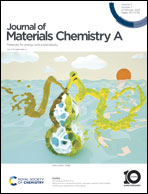Recent advances and future perspectives in MOF-derived single-atom catalysts and their application: a review
Abstract
Metal–organic-framework-derived single-atom catalysts are widely used in the catalysis field due to their special structure and superior performance. In general, there is a strong relationship between the precise control of the interaction between the carriers and metals to design efficient MOF-derived single-atom catalysts (SACs). In this paper, the synthesis of SACs from multiple MOF derivatives, the formation mechanism of various single-atom sites, and their application in the catalysis field were reviewed in detail. We concluded that the different kinds of MOF substrates were used to construct coordination environments with different anchoring conditions. Simultaneously, the related catalytic mechanisms through the introduction of metal active centers in different coordination environments are discussed in detail. Subsequently, the use of MOF-derived SACs in the fields of electrocatalysis, photocatalysis, and thermocatalysis is also introduced as well as some important characterization methods. Eventually, the field’s future potential and challenges were also outlined. How to regulate accurately the coordination environment of the central atoms from many aspects is addressed, so as to improve the catalytic performance of the catalysts and build a reasonable catalytic mechanism. Herein, we believe that this review can provide a good foundation for the future development and application of single-atom catalysts.

- This article is part of the themed collection: Journal of Materials Chemistry A Recent Review Articles


 Please wait while we load your content...
Please wait while we load your content...